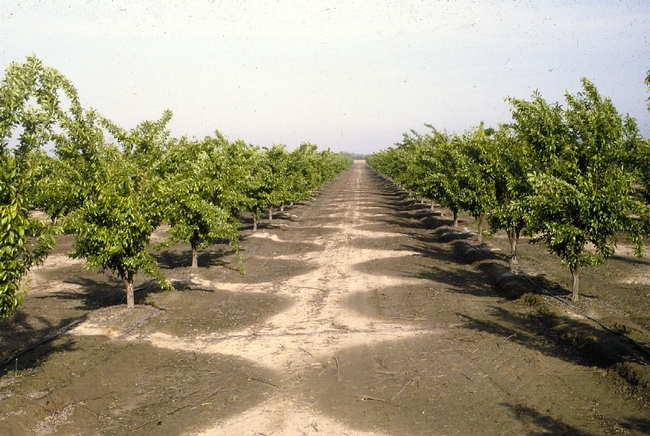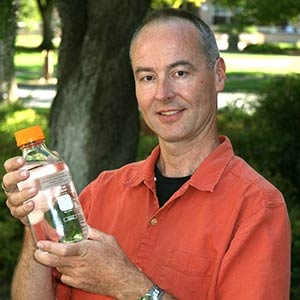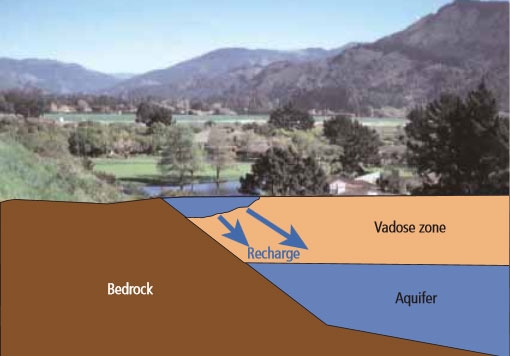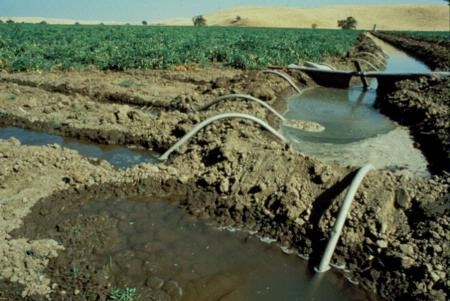Posts Tagged: groundwater
Farmers of the future will be happy about 2014 groundwater regulations
The new groundwater laws that Gov. Brown is expected to sign may not be popular with today's farmers, but tomorrow's farmers likely will look back with gratitude, reported Bettina Boxall in the Los Angeles Times.
"Some farmers are going to be having to cut back at least in the short run," said Doug Parker, director of the UC California Institute for Water Resources.
Thomas Harter, UC Cooperative Extension specialist in the Department of Land, Air and Water Resources at UC Davis, predicted the farmers' successors will appreciate the coming regulations.
"In the long run, my view is that the next generation and two generations down of farmers will find this a lifesaver," Harter said.
The bills waiting for the governor's signature won't provide an instant fix, the story said. The law will take years to implement and it could take decades for the most depleted groundwater basins recover.
In most years, groundwater amounts to 30 to 45 percent of the state's water supply, but in dry periods, it increases to 60 percent. The new law will direct local public agencies to develop sustainable groundwater management plans. If they fail, the State Water Resources Control Board steps in. The legislation gives local basin managers the ability to:
- Collect fees from groundwater users
- Monitor withdrawals
- Limit pumping
- Buy water or water rights to replenish aquifers
The Association of California Water Agencies supports the new regulations; agricultural interests are opposed, the article says.
"We thought these bills were too far-reaching," said Paul Wenger, president of the California Farm Bureau Federation.
Current groundwater management is not sustainable
Groundwater management in California can be likened to the economic theory "tragedy of the commons," according to Thomas Harter, UC Cooperative Extension specialist in the Department of Land, Air and Water Resources at UC Davis. Harter made the comment on the National Public Radio program Here & Now, which is broadcast nationally.
According to the theory, individuals, acting independently and rationally according to each one's self-interest, behave contrary to the whole group's long-term best interests by depleting some common resource. The result for California groundwater in this drought year has been reliance on groundwater to meet fully two-thirds of the state's urban and agricultural water needs.
"It's a significant concern because it's not a rate at which we can continue to use this resource," Harter said. "It's not sustainable."
Here & Now host Jeremy Hobson pointed out that California is the last Western state to regulate groundwater. Last week the California legislature sent three bills to Gov. Brown that would end a commonly held view in California that property owners have the right to draw as much groundwater as they want from wells on their property.
The lack of regulation and a continuing drought have resulted in severe overdraft of the state's aquifer. By studying the state's geology and measuring groundwater levels over decades, scientists know how much water is there, Harter said. Californians should not expect any new hidden reservoirs to be found.
"The best way I think we can address this is make information about the resource more available and let people know what happens to the resource, where (water) comes in and where it goes out, and involve the public on the decision-making on how we want to manage that resource," Harter said.
Out-of-sight groundwater is not always well understood
It can be challenging to imagine the stores of water underlying California. But Thomas Harter, UC Cooperative Extension specialist in the Department of Land, Air and Water Resources at UC Davis, shares a vivid vision of the state's vitally important groundwater resources.
In a videotaped presentation, Harter said California's Central Valley is like a giant bathtub; its walls are the Sierra Nevada and coast mountain ranges. Clay, silt, sand and gravel washed into the bathtub over millions of years and fresh water from streams, rivers and rainfall soaked into pores between sand and gravel pieces, between clay and silt particles, and in the fissures and cracks in rocks, where it has accumulated for eons.
Harter outlines the nature of California's groundwater situation in a 30-minute video that is part of the UC California Institute for Water Resources online video series. The series consists of presentations featuring UC and other experts speaking on topics aimed at helping farmers and all Californians better understand and cope with drought.
In the 1920s and 30s, farmers began pumping groundwater in vast quantities to grow summer crops on the flat dry surface. It wasn't long before the land began to sink, especially on the west side of the San Joaquin Valley and in the Tulare Lake Basin.
“Land surface levels declined as much as 30 feet during the 20th century,” Harter said.
In the 1970s, the state water project made surface water supplies available to farmers, allowing underground water to recover. However, in the last 10 years, as surface supplies have declined, farmers are drilling deeper wells to irrigate crops. Once again the land surface has begun to subside, Harter said.
For the most part, farmers have free reign when it comes to pumping groundwater.
“Landowners are not owners of the groundwater below them,” Harter said. “But they have the right to use the groundwater.” There is a constitutional mandate that all groundwater goes for beneficial use.
In the video, Harter reviews the tangle of regulations and agencies involved in managing the state's groundwater.
“About 42 percent of groundwater basins in California have some form of groundwater management plan,” Harter said. The plans contain some basic elements, but are lacking in terms of enforcement mandate, integration with surface water management and the power for agencies to manage demand.
“One of the biggest political questions is what are the roles of the state, local and regional agencies?” Harter said. “The State Water Control Board recently emphasized that it is pursuing a primarily local, regional management approach to groundwater management. But still it has an oversight role and defining that oversight role is something we will be looking at over the next few months and years.”
View the video here:
Pump-and-fertilize a potential solution to groundwater nitrate
Pumping up water contaminated with nitrate and using it to fertilize crops is one way the agriculture industry can deal with the groundwater contamination detailed in a UC Davis report released last week, reported Mark Grossi in the Fresno Bee.
By itself, pump-and-fertilize won't be enough, said Thomas Harter, the lead author of the report, Addressing Nitrate in California's Drinking Water. It won't work in areas where there is too much salt in the groundwater, for example. Also, more fresh water must be allowed to seep into the underground aquifer. The fresh water will replace the tainted water and refill underground areas that have been overpumped in the past.
Dare to be different: Think beyond tomatoes, peppers
Laura Christman, Redding Record-Searchlight
When planning a summer garden, try some unusual vegetables, like heat-tolerant greens and odd tubers, the article suggests.
"Most people love tomatoes and a good sweet pepper, but that's not the be-all, end-all of summer nutritional health," said Sean Kriletich, a gardening expert with University of California Cooperative Extension Sierra Central.
Mixing things up in the garden yields different flavors, more nutrition, additional colors, textures and beneficial insects.
Traces of dairy antibiotics reach groundwater
A very small amount of antibiotics administered to dairy cattle makes its way into shallow groundwater, according to research by UC Davis Cooperative Extension groundwater hydrologist Thomas Harter.The results of Harter's research were outlined in a UC Davis press release distributed last week and picked up by the Sacramento Bee, an LA Times blog and other media outlets.
"Our next task is to determine whether these particular antibiotics are further degraded before reaching domestic and public water wells," Harter was quoted in the release.
California dairies typically give antibiotics to young cows, and to nonlactating adult cows. The news release said health officials are concerned that antibiotics could travel from manure lagoons into drinking water for people and livestock. Harter said that the health effects of antibiotics in drinking water at the low levels he detected are not known.
Harter's study was conducted at two large freestall dairy operations in the San Joaquin Valley with a total of more than 2,700 milking cows and 2,500 heifers. The research was published Aug. 10 in the American Chemical Society's online journal Environmental Science & Technology.

Dairy cow.





